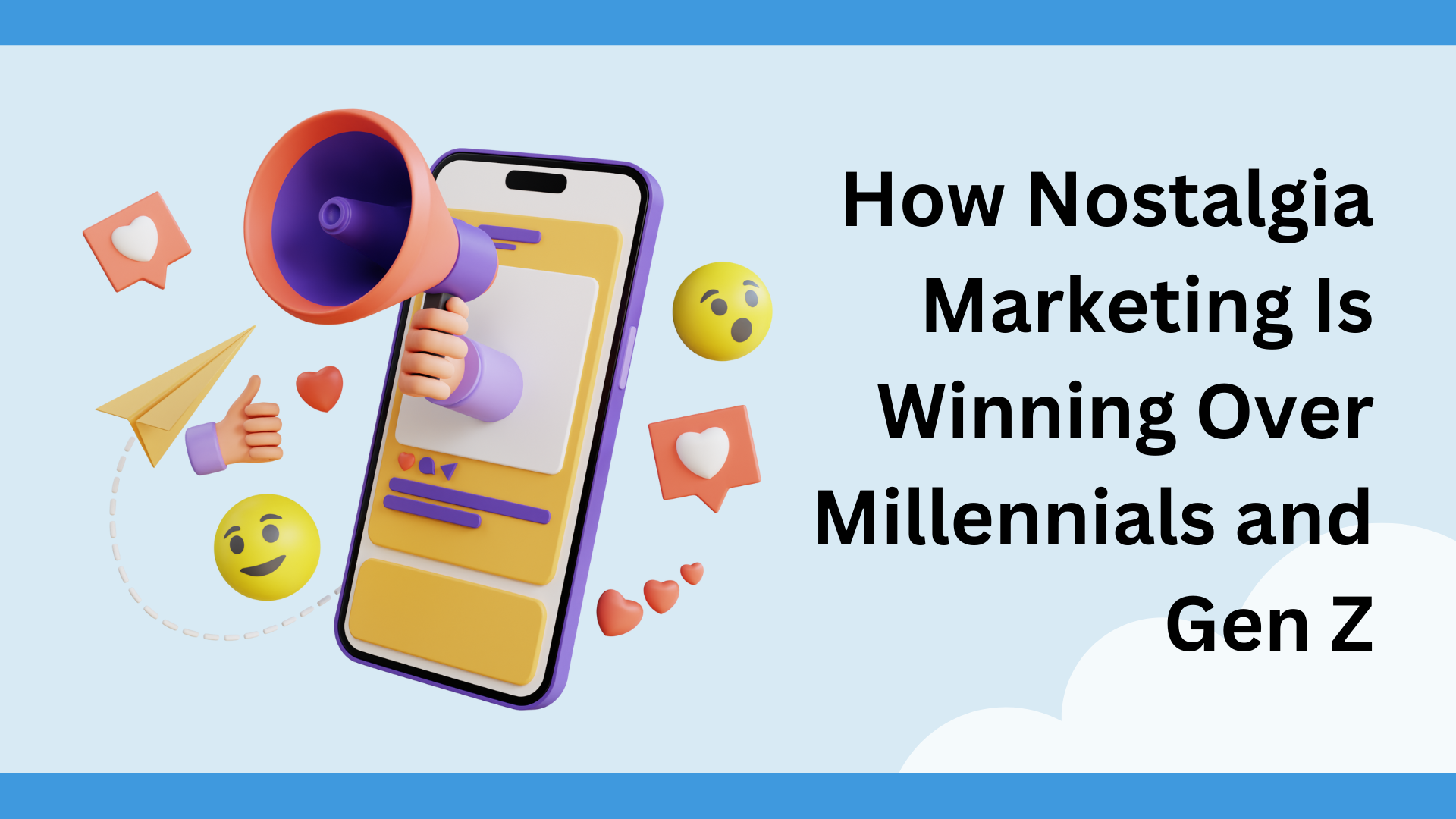In our age of information, trends flash by quicker than ever before—and grabbing the attention of Millennials and Gen Z can be difficult. So, how are brands doing it? By reaching into the past. It sounds too simple to be true—especially given the market we’re talking about—but we promise, it works if done well. We’re talking about the ever-potent nostalgia, the emotional connection-builder that’s stronger than ever.
Understanding Nostalgia Marketing
Nostalgia… the bridge between yesterday and today. Nostalgia marketing uses the warm fuzzy feelings of the past to evoke an emotional response. By tapping into the collective memories of target audiences, brands can create campaigns that feel familiar and engaging. They sprinkle in elements from “the good old days”. It’s not necessarily about selling a product but promoting an emotion and creating a connection that feels personal.
Nostalgia Marketing to Gen Z and Millennials: Why It Works
The Comfort of the Past
The world today is defined by its rapid change and eternal uncertainty. Everybody finds comfort in the familiar aspects of their childhoods—including Millennials and Gen Zers. Revisiting the songs, shows, or toys that defined our younger years can feel like chicken soup for the soul in comparison to the rollercoaster of the current day and age.
Digital Natives with Analog Memories
While Gen Z is the first generation of true digital natives, many still cherish the tactile experiences of the days gone by, often introduced to them by older siblings or retro trends. Millennials, though, having grown up during the tech boom, straddle the line between analog and digital worlds, making them particularly receptive to nostalgia. Vinyl records, Polaroid cameras, vintage fashion—all favorites among this crowd. Blending the digital with the analog hits a sweet spot.
Shared Cultural Memories
Both generations value authenticity and shared experiences. A brand’s effort in creating a sense of nostalgia through an authentic collective memory creates a sense of community and belonging. These generations appreciate this type of authentic effort in marketing campaigns.
Nostalgia Marketing Campaigns That Worked
Pokémon Go
Remember the good old days of trading Pokémon cards during recess? Well, Millennials and Gen Z sure do. And Pokémon Go was a stroke of marketing genius that capitalized on that nostalgia and took it to the next level with augmented reality. Suddenly, everyone from college kids to office workers was out catching ’em all, reliving childhood excitement in a whole new way. The game became a global phenomenon.
Coca-Cola’s “Share a Coke” Campaign
When Coca-Cola started printing names on bottles, it evoked those feelings of community that were common in earlier eras of marketing. This campaign brought back the days when sharing a Coke felt personal. It was a simple idea that made people smile, snap photos, and share stories.
Nike’s Revival of Classic Sneakers
Nike frequently re-releases classic sneaker designs from the 80s and 90s, tapping into the both nostalgia of older consumers and deep-seated memories of the younger generation.By reintroducing iconic sneakers, they connected with those who wore them back in the day and those discovering them for the first time, bridging the two generations together.
Gen Z and Millennial Consumer Trends: How To Use Nostalgia
- Reintroduce Retro Products: If you have a product that was a fan favorite at one point, reintroduce it. Sometimes, what’s old becomes new again—among both older and younger generations.
- Vintage is Always Back: Incorporate retro designs or themes into your branding. Using retro visuals, fonts, and music in advertising can create those nostalgic feelings without altering the product itself. A touch of vintage flair can make your product go a long way in today’s market.
- Tell Authentic Stories: Share the journey of your brand. Show how it’s grown but stayed true to its roots. Authenticity resonates, especially when it feels like a shared history.
- Collaborate with Nostalgic Brands or Icons: Collaborations with beloved brands or figures from the past can amplify nostalgia and boost appeal and credibility among target audiences.
Potential Challenges
While nostalgia is powerful, it’s important to use it carefully. It has to feel genuine. It has to feel authentic. Forced or insincere nostalgia can backfire, making your brand seem out of touch or opportunistic. This can alienate your audience. It’s important to balance the honor for the past and focus on the future.
Nostalgia marketing holds power in Gen Z and Millennial marketing—it functions as a bridge connecting them to different, maybe “better” days. It’s a strategy that’s proving its worth. By understanding and embracing what made the past special, you can create campaigns that truly catch the hearts of your younger audiences. As long as you do it thoughtfully. These kids catch on quick.





Leave a Comment